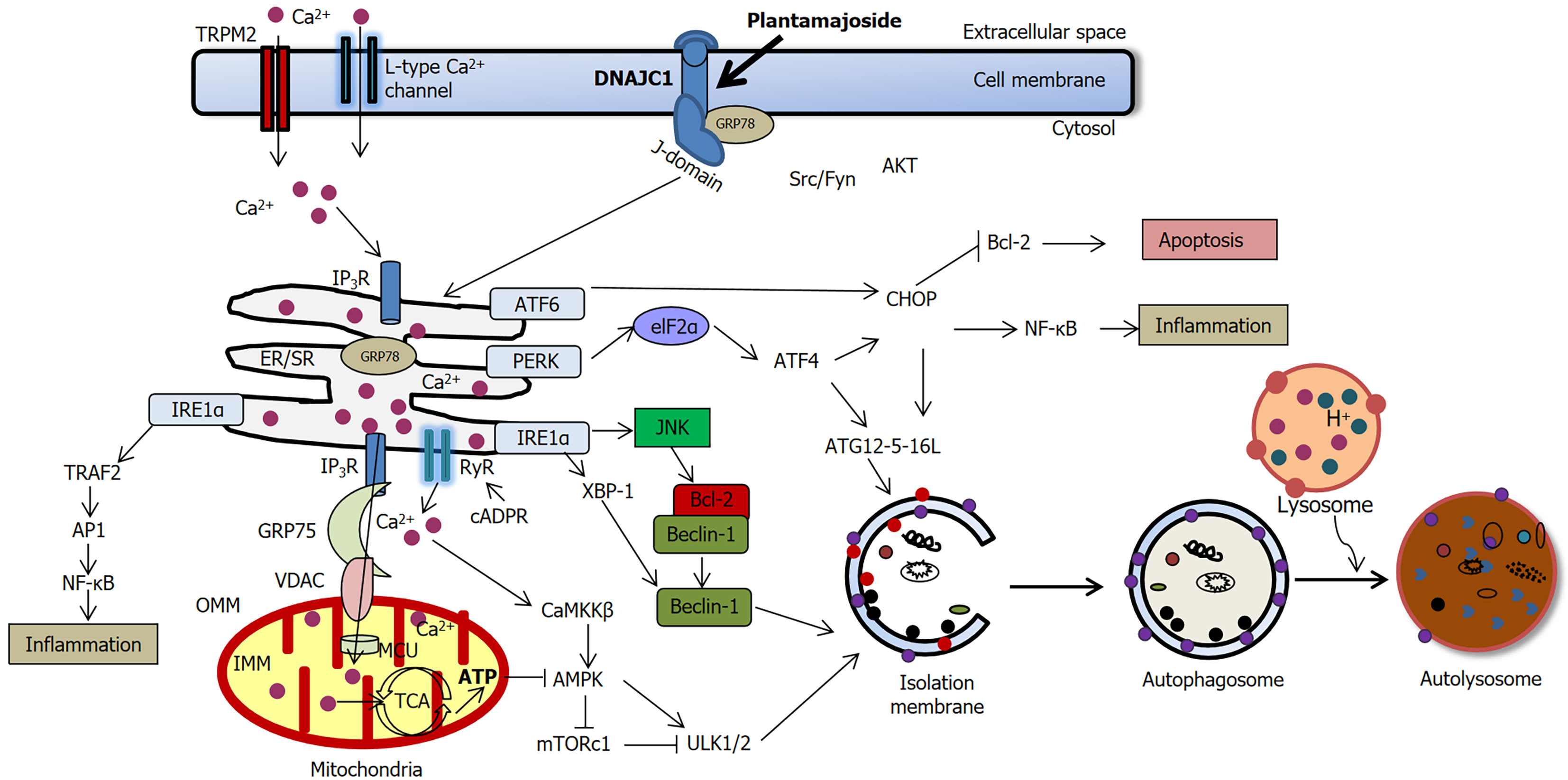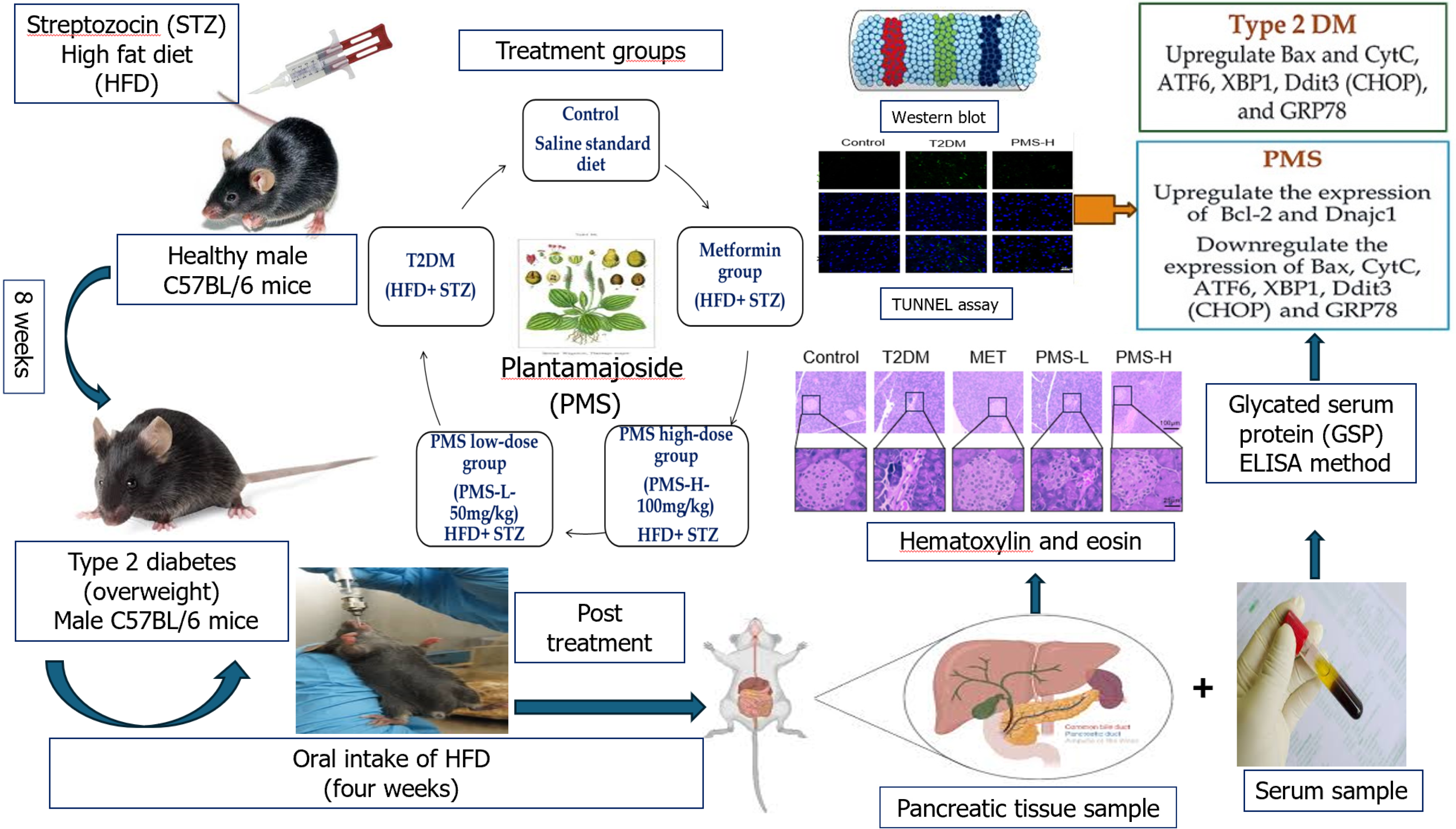Copyright
©The Author(s) 2025.
World J Diabetes. Apr 15, 2025; 16(4): 104241
Published online Apr 15, 2025. doi: 10.4239/wjd.v16.i4.104241
Published online Apr 15, 2025. doi: 10.4239/wjd.v16.i4.104241
Figure 1 The effects of Plantamajoside on pancreatic β-cells in type 2 diabetes mellitus.
Upregulation of DNAJC1 results in the suppression of endoplasmic reticulum (ER) stress markers such as CHOP and β-cell apoptosis[29]. ERK and NF-κB regulate both pro-apoptotic and anti-apoptotic effects, depending on the stimulus and the cell type. The ER stress marker CHOP stimulates the intrinsic apoptotic pathway by inhibiting the antiapoptotic protein Bcl-2. Bcl-2 inhibition by CHOP releases the autophagy protein Beclin-1 from the Bcl-2-Beclin1 complex, allowing Beclin-1 to initiate autophagy via the formation of isolation (autophagosomal) membrane. Thus, Plantamajoside may inhibit apoptosis and activate autophagy in stressed β-cells as a pro-survival mechanism[3,5,23,26,27,32-34].
Figure 2 A summary of various molecular biology methods used in the in vivo study by Wang et al[29].
Citation: Wang D, Wang YS, Zhao HM, Lu P, Li M, Li W, Cui HT, Zhang ZY, Lv SQ. Plantamajoside improves type 2 diabetes mellitus pancreatic β-cell damage by inhibiting endoplasmic reticulum stress through Dnajc1 up-regulation. World J Diabetes 2025; 16: 99053 [PMID: 39959264 DOI: 10.4239/wjd.v16.i2.99053] Copyright© The Authors 2025. Published by Baishideng Publishing Group Inc.
- Citation: Al-Bari MAA, Davamani F, Bhatnagar P, Eid N. Plantamajoside mitigates endoplasmic reticulum stress-mediated pancreatic β-cell apoptosis in type 2 diabetes via DNAJC1 upregulation. World J Diabetes 2025; 16(4): 104241
- URL: https://www.wjgnet.com/1948-9358/full/v16/i4/104241.htm
- DOI: https://dx.doi.org/10.4239/wjd.v16.i4.104241














